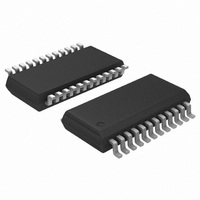ADT7463ARQZ ON Semiconductor, ADT7463ARQZ Datasheet - Page 10

ADT7463ARQZ
Manufacturer Part Number
ADT7463ARQZ
Description
IC REMOTE THERMAL CTRLR 24-QSOP
Manufacturer
ON Semiconductor
Series
dBCool®r
Datasheet
1.ADT7463ARQZ-REEL.pdf
(52 pages)
Specifications of ADT7463ARQZ
Function
Fan Control, Temp Monitor
Topology
ADC, Comparator, Fan Speed Counter, Multiplexer, Register Bank
Sensor Type
External & Internal
Sensing Temperature
-40°C ~ 120°C, External Sensor
Output Type
SMBus™
Output Alarm
No
Output Fan
Yes
Voltage - Supply
3 V ~ 5.5 V
Operating Temperature
-40°C ~ 120°C
Mounting Type
Surface Mount
Package / Case
24-QSOP
Lead Free Status / RoHS Status
Lead free / RoHS Compliant
Available stocks
Company
Part Number
Manufacturer
Quantity
Price
Part Number:
ADT7463ARQZ
Manufacturer:
ADI/亚德诺
Quantity:
20 000
Company:
Part Number:
ADT7463ARQZ-REEL
Manufacturer:
ONSEMI
Quantity:
2 785
Part Number:
ADT7463ARQZ-REEL
Manufacturer:
ON/安森美
Quantity:
20 000
ADT7463
2. Data is sent over the serial bus in sequences of nine clock
3. When all data bytes have been read or written, stop conditions
Any number of bytes of data can be transferred over the serial
bus in one operation, but it is not possible to mix read and write
pulses, eight bits of data followed by an Acknowledge Bit
from the slave device. Transitions on the data line must
occur during the low period of the clock signal and remain
stable during the high period, as a low-to-high transition
when the clock is high may be interpreted as a STOP signal.
The number of data bytes that can be transmitted over the
serial bus in a single READ or WRITE operation is limited
only by what the master and slave devices can handle.
are established. In WRITE mode, the master pulls the data line
high during the tenth clock pulse to assert a STOP condition.
In READ mode, the master device overrides the acknowledge
bit by pulling the data line high during the low period before
the ninth clock pulse. This is known as No Acknowledge.
The master then takes the data line low during the low pe-
riod before the 10th clock pulse, and then high during the
10th clock pulse to assert a STOP condition.
Figure 7. Writing a Register Address to the Address Pointer Register, Then Writing Data to the Selected Register
SDA
SCL
START BY
MASTER
0
1
1
0
SERIAL BUS ADDRESS
1
FRAME 1
BYTE
SDA (CONTINUED)
1
SCL (CONTINUED)
A1
Rev. 4 | Page 10 of 52 | www.onsemi.com
A0
R/W
ADT7463
ACK. BY
–10–
D7
1
9
in one operation because the type of operation is determined at
the beginning and cannot subsequently be changed without
starting a new operation.
In the case of the ADT7463, write operations contain either one
or two bytes, and read operations contain one byte and perform
the following functions.
To write data to one of the device data registers or read data from
it, the address pointer register must be set so that the correct data
register is addressed, then data can be written into that register
or read from it. The first byte of a write operation always contains
an address that is stored in the address pointer register. If data
is to be written to the device, then the write operation contains
a second data byte that is written to the register selected by the
address pointer register.
This is illustrated in Figure 7. The device address is sent over
the bus followed by R/W being set to 0. This is followed by two
data bytes. The first data byte is the address of the internal data
register to be written to, which is stored in the address pointer
register. The second data byte is the data to be written to the
internal data register.
D6
D7
1
D6
D5
ADDRESS POINTER REGISTER BYTE
D5
D4
FRAME 3
DATA
BYTE
D4
D3
FRAME 2
D3
D2
D2
D1
D1
D0
ADT7463
ACK. BY
D0
9
ADT7463
ACK. BY
STOP BY
MASTER
9
REV. C











